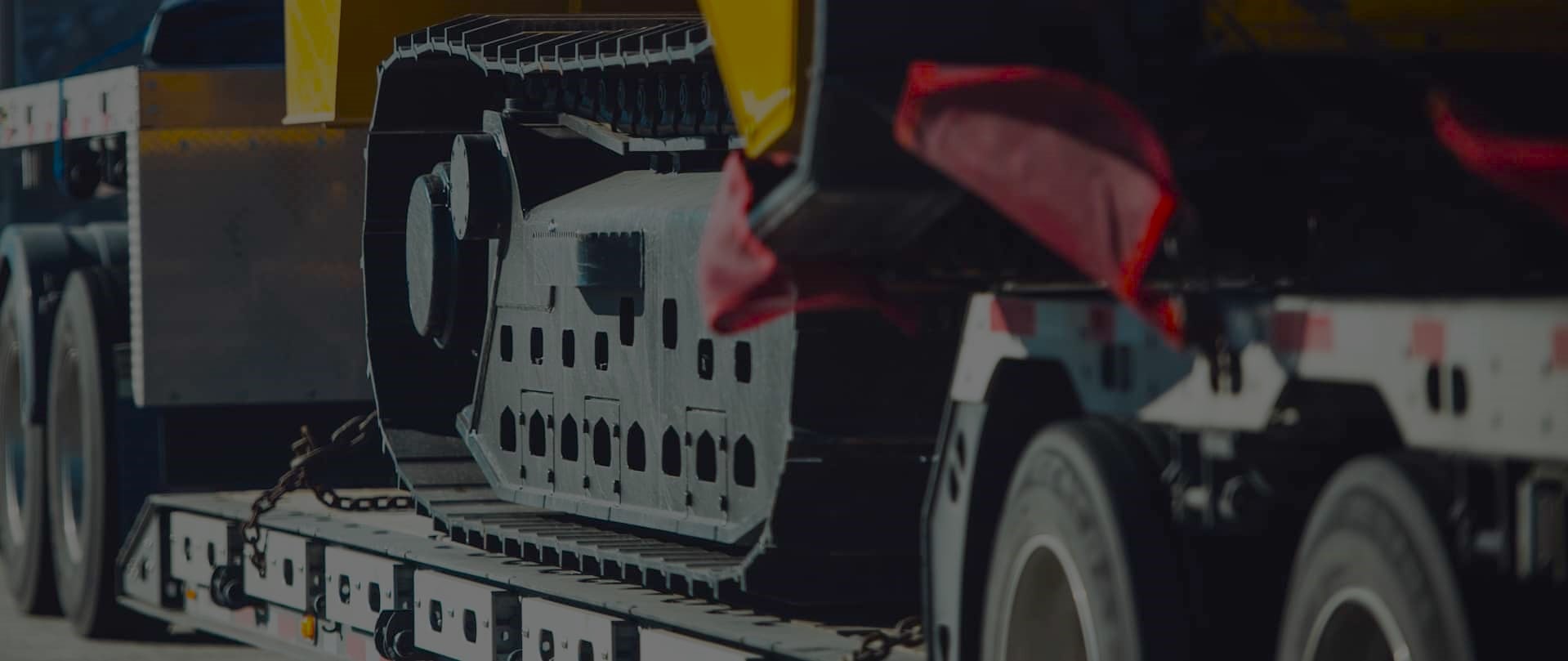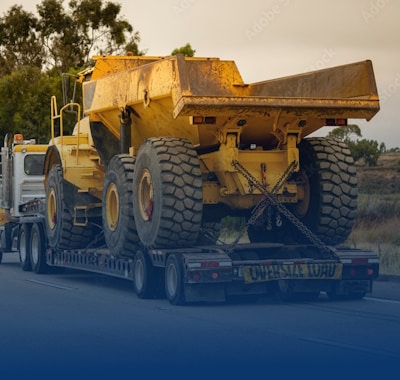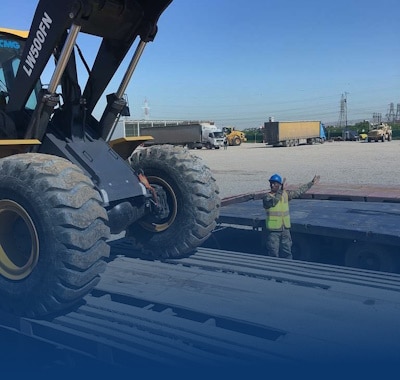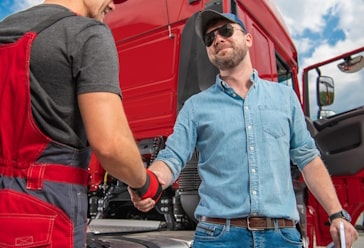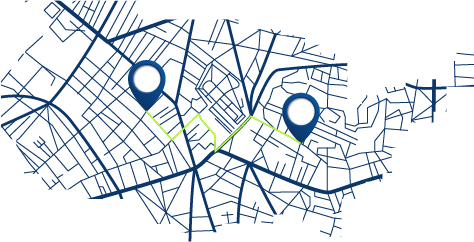A Guide to Hauling Wheel Loaders: Safety Procedures
Freedom Heavy Haul can offer expedited Pickup and Delivery for any size shipment anywhere in the USA. Contact us today for No Hassle, No Pressure Pricing.
Transporting heavy construction equipment like wheel loaders needs careful planning and strict safety rules. This guide will help you move these powerful machines safely for your projects. You’ll learn the key steps to ensure a secure and compliant hauling process.
Understanding weight and dimension limits is crucial. You’ll also find out how to pick the right transport equipment. By following these best practices, you can handle the challenges of hauling with confidence.
This guide is for both experienced construction pros and newcomers to heavy machinery transport. It will give you the knowledge and strategies to safely haul wheel loaders. Get ready to make your equipment logistics smoother and keep safety as your top priority.
Understanding Wheel Loader Transportation Requirements
When moving wheel loaders, you need to plan carefully and follow the rules. Knowing the weight and size limits, how to classify the equipment, and what documents you need is key. This ensures a smooth and legal move.
Weight and Dimension Restrictions
Wheel loaders are big and heavy, so moving them has strict rules. These rules change in different places, so check the local laws. If you go over the limits, you could face fines, delays, or even not being able to move the machine.
Equipment Classification Guidelines
Wheel loaders are seen as heavy equipment. This means they need special care when moving. Knowing your wheel loader’s class helps you follow the right rules, get the right permits, and stay safe during transport.
Required Documentation and Permits
- You’ll need detailed paperwork, like the wheel loader’s make, model, and serial number, for transport.
- Depending on where you’re going and how you’re getting there, you might need special permits. These could include oversize/overweight vehicle permits, state-specific permits, or special hauling authorizations.
- Having all your paperwork ready before you move can avoid delays or problems at checkpoints along the way.
“Proper planning and attention to transportation requirements are essential for the successful and safe relocation of wheel loaders to your project site.”
Pre-Haul Equipment Inspection Checklist
Getting your construction equipment or heavy machinery ready for transport is crucial. This detailed checklist helps make sure your wheel loader is ready to go. It also reduces the chance of delays or accidents during transport.
Before you load your wheel loader onto the transport vehicle, inspect these important areas:
- Mechanical Condition – Look over the engine, transmission, brakes, and other key parts for wear, damage, or issues.
- Fluid Levels – Check the engine oil, hydraulic fluid, coolant, and other vital fluids to make sure they’re at the right levels.
- Safety Features – Make sure all safety lights, reflectors, and warning devices are working and meet transport rules.
- Attachment Points – Check the wheel loader’s attachment points, like the bucket or forks, to ensure they’re securely attached and ready for transport.
- Tires and Wheels – Look at the tires for the right inflation, tread depth, and any damage. Also, check that the wheel lug nuts are tightened correctly.
By carefully following this pre-haul inspection checklist, you can be sure your wheel loader is ready for safe and efficient transport. This is true whether you’re moving it to a construction site, a job site, or between facilities.
“Proper preparation is the key to successful transportation of construction equipment and heavy machinery.”
Steps to Safely Haul Wheel Loaders for Industrial Projects
When moving wheel loaders to industrial sites, careful planning is key. It keeps the equipment and transport crew safe. Let’s look at the important steps in this process.
Loading Preparation Protocol
Before loading, a detailed check is needed. Inspect the tires, brakes, and hydraulics to make sure they’re good to go. Measure the loader’s size and weight to see if it fits the transport plan.
Securing Equipment Guidelines
- Use the right straps, chains, and binders to keep the loader steady on the transport.
- Place the loader so its weight is spread out and won’t shift during the trip.
- Double-check that all securing points are tight and connected right.
Transport Route Planning
Planning the route is vital for safe transport. Look into the road, clearances, and any obstacles that might get in the way. Also, get the right permits and follow all rules.
By following these steps, you can reduce risks and make sure the transport goes smoothly. This protects the equipment and the logistics of the job site.
Selecting the Right Transport Equipment
Choosing the right transport equipment for construction equipment like wheel loaders is key. It ensures the safety and efficiency of your heavy machinery hauling. Several factors need to be considered when picking the best trailer or truck for the job.
The weight capacity of the transport vehicle is a major factor. Wheel loaders are very heavy. So, it’s important to pick a trailer or truck that can handle the weight of the machine. Also, the deck size of the transport equipment must fit the dimensions of the wheel loader.
- Flatbed trailers are a popular choice for hauling wheel loaders due to their large deck size and high weight capacity.
- Lowboy trailers are another option, as they offer a lower loading height, making it easier to load and unload the wheel loader.
- For longer distances or when transporting multiple pieces of construction equipment, a semi-trailer or tractor-trailer combination may be the most suitable choice.
It’s crucial to ensure the transport equipment has the necessary safety features. This includes sturdy tie-down points to securely fasten the wheel loader during transit. By choosing the right transport equipment, you can ensure the safe and efficient delivery of your heavy machinery to the job site.
Essential Safety Equipment and Tools for Hauling
When moving wheel loaders, safety is key. The right safety gear and tools are crucial for a safe trip. We’ll look at the must-haves for safe wheel loader transport.
Tie-Down Systems and Chains
Securing your wheel loader is vital. Use top-notch tie-downs like chains, straps, or winches. They must hold the weight and forces of the journey, keeping your loader stable.
Warning Signals and Safety Markers
Make your loader visible with warning signals and markers. Use flashing lights, reflective tape, and oversized load signs. These help alert other drivers, lowering accident risks and making transport smoother.
Emergency Response Kit Requirements
- First-aid kit: Have a fully stocked first-aid kit for minor injuries or emergencies.
- Fire extinguisher: Keep a fire extinguisher ready for any fire incidents.
- Roadside emergency tools: Carry tools like a jack, wheel chocks, and a tool kit for mechanical issues.
Focus on safety and be ready with the right gear. This ensures a safe and successful transport of your wheel loaders.
Weather Considerations During Transportation
When moving wheel loaders for industrial projects, planning is key. This is especially true when dealing with different weather. Adjusting your plans to match the weather can help ensure safe and efficient delivery.
Bad weather can make hauling wheel loaders tough. Rain or snow can make it hard to see and drive safely. Wind can also make the trailer unstable, risking accidents. Extreme temperatures can damage the machinery, causing problems during transport.
Preparing for Weather Variations
To handle weather risks, staying informed and planning ahead is crucial. Keep an eye on the weather forecast and adjust your plans to avoid bad conditions. Here are some tips to help you deal with weather challenges:
- Watch real-time weather reports and be ready for sudden storms or changes.
- Make sure your wheel loader is secure and weatherproofed before driving.
- Slow down and keep a safe distance to handle poor visibility and traction.
- Have the right safety gear, like chains or de-icers, for slippery roads.
- Have a backup plan for unexpected weather changes or route issues.
By being alert and adjusting your steps to safely haul wheel loaders for industrial projects to the weather, you can ensure a successful transport. This will help with your jobsite logistics for moving heavy equipment.
Legal Requirements and Compliance Measures
Transporting heavy construction equipment like wheel loaders must follow legal rules. It’s important to know the key steps to ensure safe and legal transport. This is crucial for your construction equipment.
Department of Transportation Regulations
The Department of Transportation (DOT) has strict rules for moving heavy machinery. These rules cover weight, size, needed documents, and safety. Knowing the DOT’s rules is a key step for legal transport.
Insurance Requirements
Heavy machinery transport needs strong insurance. The size, weight, and distance of your equipment determine the insurance needed. Talk to your insurance provider to get the right coverage before moving your equipment.
Driver Qualification Standards
Drivers must meet DOT’s strict standards. They need a commercial driver’s license (CDL), pass background checks, and have a clean driving record. Properly trained and qualified drivers are key for safe and legal transport.
Understanding and following legal rules for construction equipment transport is complex. But, by knowing the regulations, insurance needs, and driver standards, you can move your heavy machinery safely and legally. This helps keep your operations running smoothly.
Best Practices for Unloading Operations
Unloading your wheel loader safely is as important as getting it there. To make unloading smooth and secure, follow these steps:
Prepare the Unloading Site
- Choose a flat, stable spot without debris or obstacles.
- Make sure there’s enough room for the equipment and for moving around.
- Use safety cones or barricades to mark the unloading area clearly.
Position the Trailer Properly
Position the wheel loader shipping trailer for easy unloading. Line it up with the unloading spot and lock the brakes to keep it still.
Secure the Unloading Equipment
- Check all chains, straps, and tie-downs to make sure they’re good and secure.
- Start by removing the restraints closest to the wheel loader’s path.
- Keep a safe distance from the equipment while it’s being unloaded.
By sticking to these best practices for equipment relocation services, you can unload your wheel loader safely and efficiently. This reduces the chance of damage or injury.
Common Hazards and Prevention Strategies
Hauling wheel loaders for industrial projects needs careful planning and execution. A thorough risk assessment helps identify and tackle these challenges early on. Start by checking the job site logistics, like the transport route and loading areas.
Look out for any obstacles or weather that could affect safety.
Risk Assessment Procedures
Do a detailed risk assessment to spot potential dangers. These could be unstable loads, uneven ground, overhead dangers, or bad weather. Create a plan to tackle each risk, listing safety steps and backup plans.
Keep an eye on the situation and change your plan if needed to stay safe and efficient.
Safety Protocol Implementation
Set up a strong safety plan for the wheel loader transport. Make sure your team is trained and has the right tools and PPE. Have clear communication, hold safety meetings, and follow safety rules closely.
This helps lower the chance of accidents or problems during transport.
